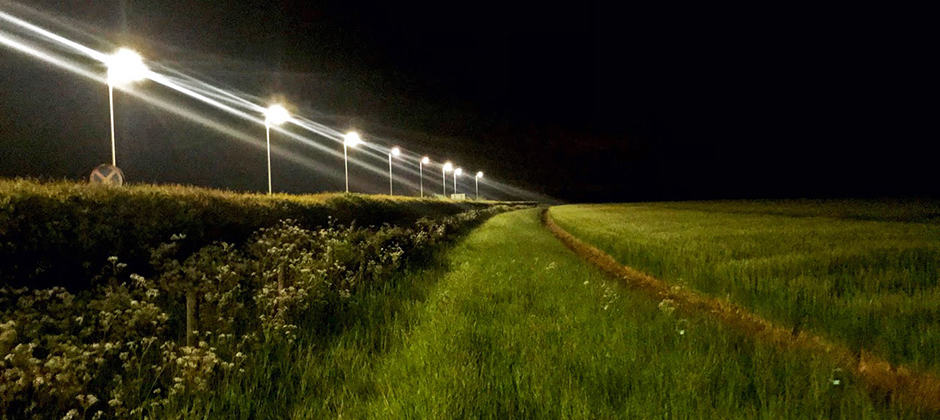Share this article
LEDs may cause more insect declines than other lights
LED lights’ energy saving properties are making them increasingly common, but they may repel some insects at higher rates than older, halogen-style streetlamps.
“We don’t really understand the cause of insect declines,” said Douglas Boyes, a PhD researcher at the UK Centre for Ecology and Hydrology, an independent nonprofit research institute. But he and many other scientists believe light pollution is potentially causing pollinator declines in many parts of the globe.
In a study published recently in Science Advances, Boyes and his colleagues looked at how light is impacting insects. After examining about 500 possible locations with streetlamps in the Thames Valley in the United Kingdom, they found 27 sites with streetlamps that also had a comparable area without streetlamps. They compared the number of caterpillars in the lit and unlit areas.
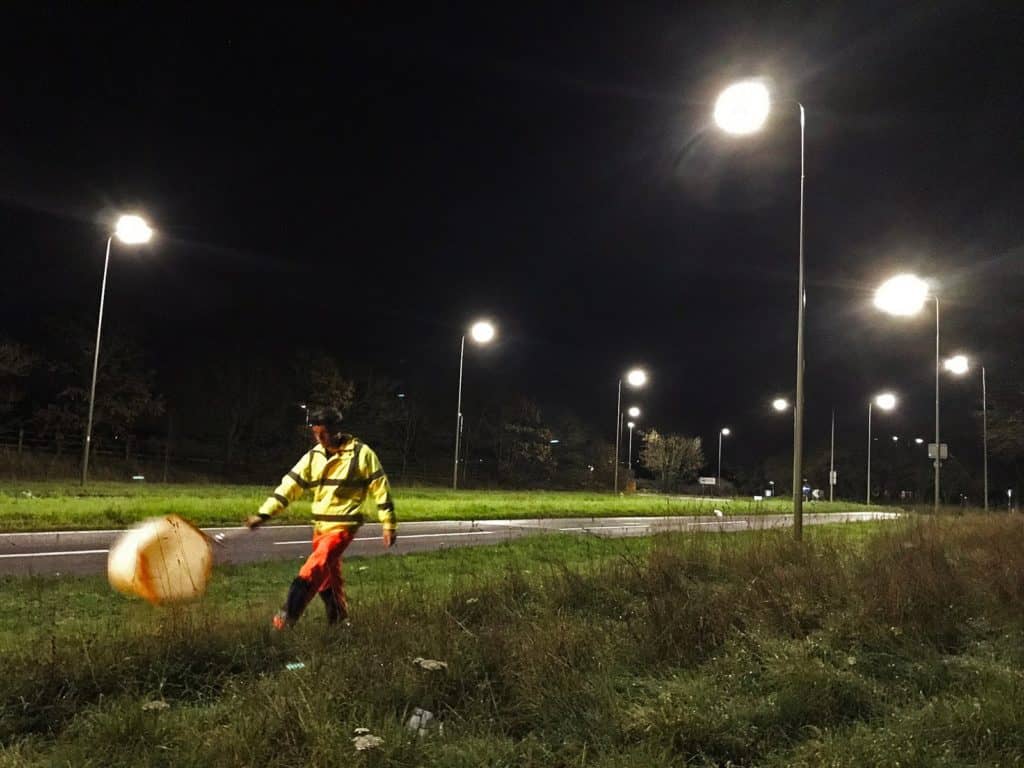
A researcher sweeps grass for caterpillars under white LED lights. Credit: Jacob Jaffe
The team studied caterpillars, since they were easier to catch and are more restricted in their movement than flying insects. The collected them in the spring, when caterpillars are most abundant, in both 2019 and 2020. To collect the insects from hedgerows, they put pipes through the bushes and shook the insects loose before collecting data on them in unlit and lit areas.
“You hit it five times and the caterpillars come falling out,” Boyes said.
The team also looked for caterpillars in meadows during winter 2019-2020. They swept nets over the grass, capturing the caterpillar stage of species like pebble prominent moths (Notodonta ziczac) and elephant hawk moths (Deilephila elpenor).
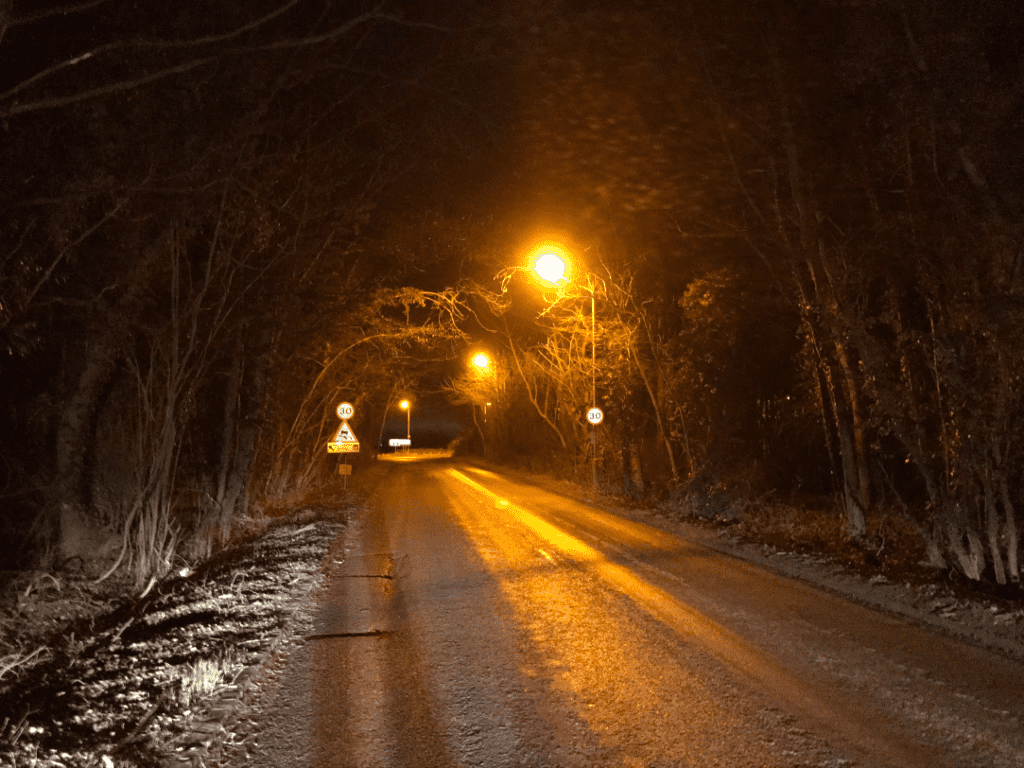
Sodium-style streetlamps had less of a negative effect on caterpillar abundance than LED lights.
Credit: Douglas Boyes
Before they even analyzed the data in depth, Boyes and his co-authors could see a huge difference between lit and unlit areas. The lit areas sometimes only had half as many insects as unlit areas.
“That was the most striking thing,” he said. “You didn’t even need to run the data.”
The researchers also weighed individual caterpillars and were surprised to find that the moths around the lit areas were heavier. The researchers think the caterpillars, which are confused by 24 hours of daylight, may rush their development toward adulthood, bringing unknown physiological costs.
Aside from the loss of insects themselves, this lighting could also cause problems higher up in the food chain.
“That’s a big drop in the amount of food available for songbirds to feed their chicks,” Boyes said, adding that hedgehogs (Erinaceus europaeus), shrews and bats also feed on insects. Since these caterpillars also grow into moths or butterflies, their loss could also spell a reduction in pollinator services.
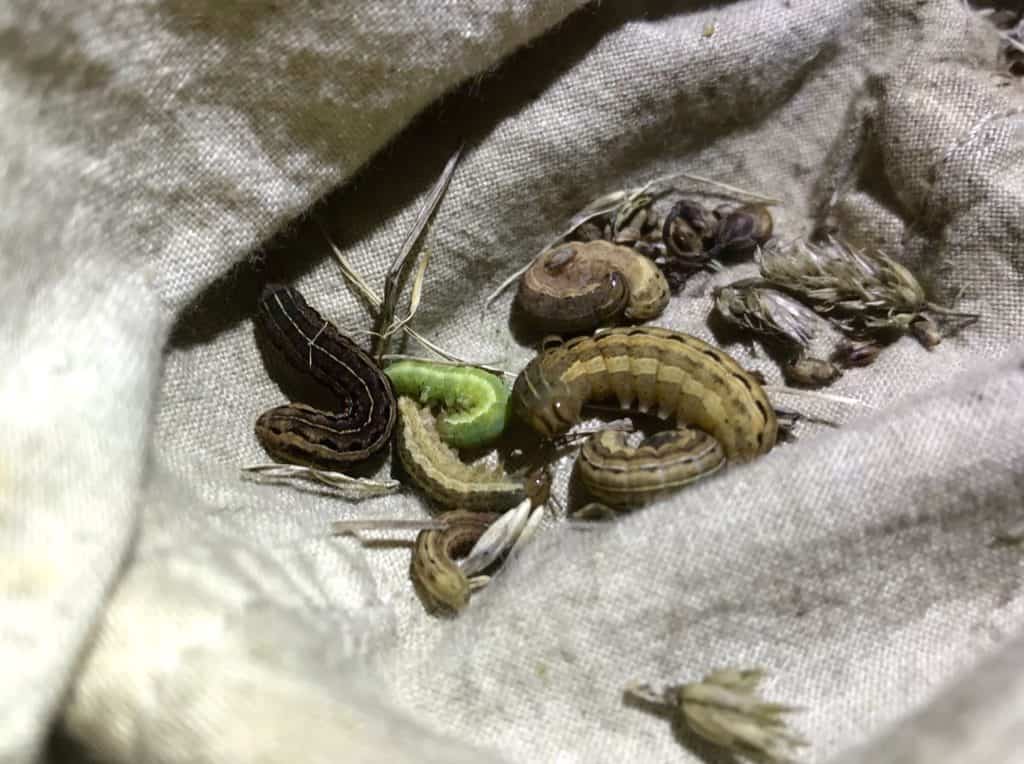
Caterpillars captured by sweep netting. Credit: Douglas Boyes
Some of the lights used in the streetlamps were LEDs. Others were older, sodium-based light bulbs that give off an orange glow. The researchers found that the LEDs negatively affected insects more than the sodium lights in the hedgerow surveys. Caterpillar numbers were 52% lower in the hedgerow surveys under LED lights than unlit areas. Sodium-based lights had 41% lower caterpillar numbers than unlit areas.
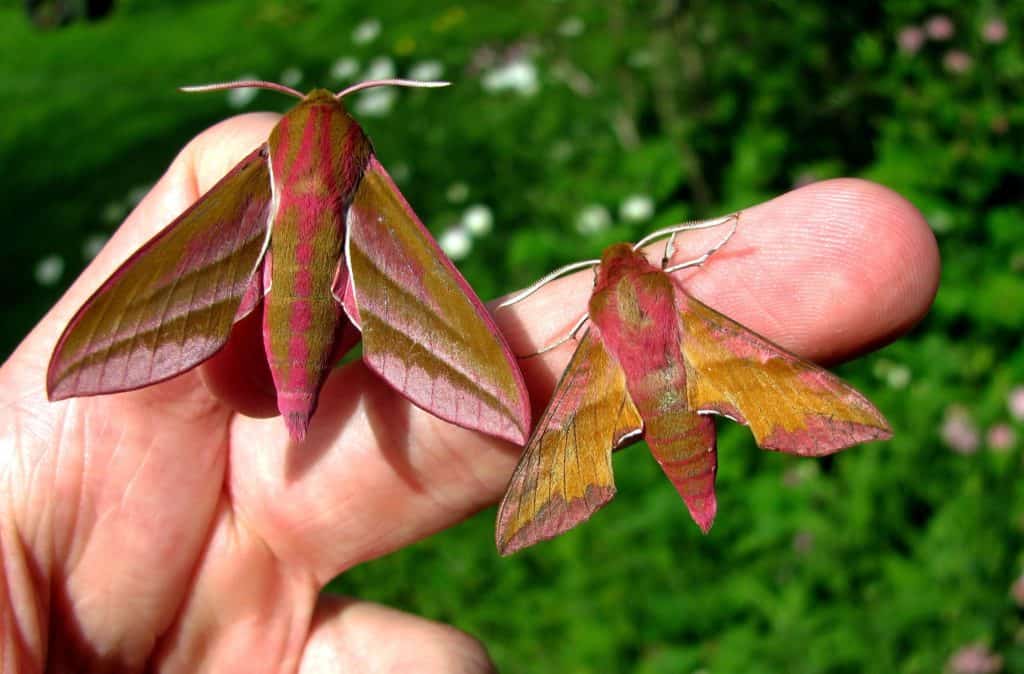
Elephant hawk moths. Credit: Douglas Boyes
This discovery is concerning as there’s a global trend toward using more LED lights due to their energy efficiency. But the good news, Boyes said, is that these lights can be more easily modified than sodium-based lights. LED lights can be modified to become dimmer or shine different colors of light that may impact insects less. They can also be motion-triggered.
“There are really easy solutions available,” he said.
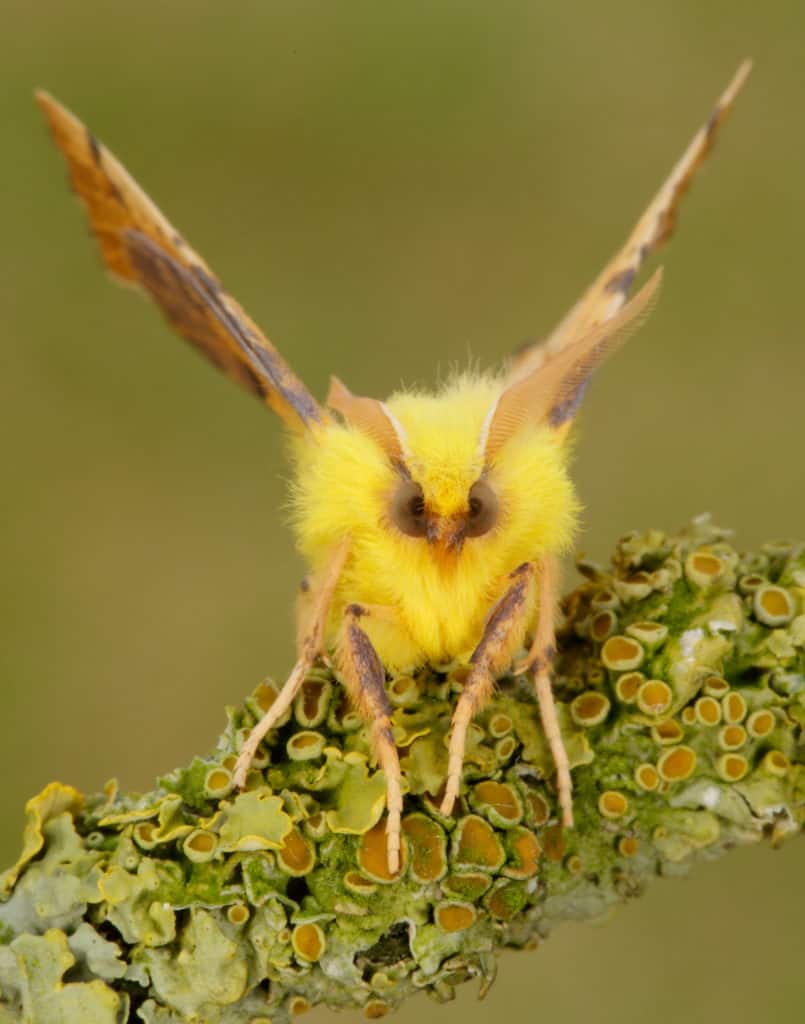
Elephant hawk moths. Credit: Douglas Boyes
For more on the effects of artificial light on wildlife, check out the cover story in the September/October issue of The Wildlife Professional.
Header Image: White LED lights along a roadside in Oxfordshire in the U.K. Credit: Douglas Boyes



